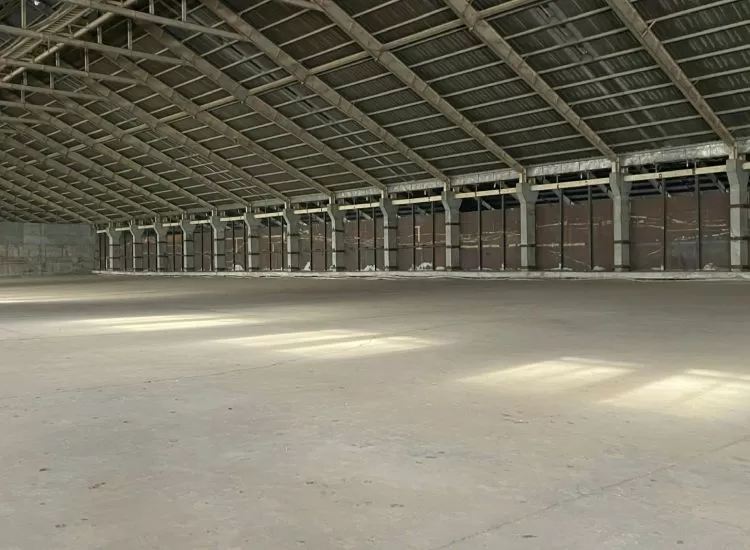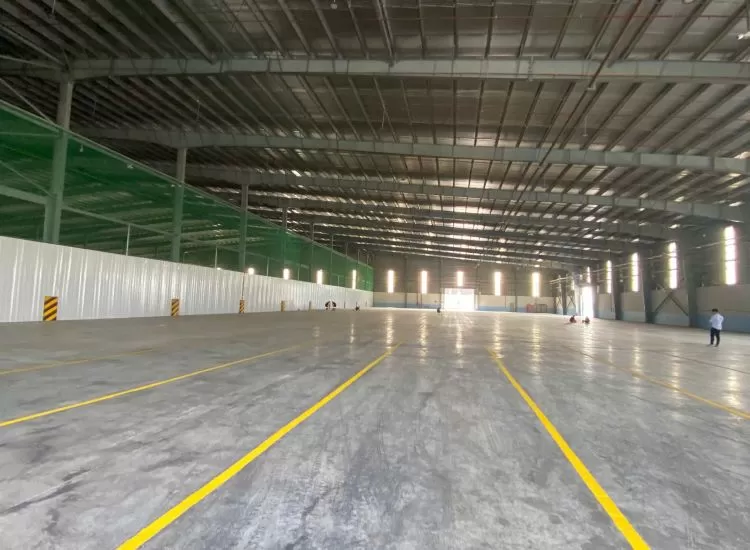Things to know about EVFTA Agreement in Vietnam
In addition to the Comprehensive and Progressive Agreement for Trans-Pacific Partnership (CPTPP), the EVFTA Agreement is an important new generation of free trade agreement to which Vietnam is a party.

In addition to the Comprehensive and Progressive Agreement for Trans-Pacific Partnership (CPTPP), the EVFTA Agreement is an important new generation of free trade agreement to which Vietnam is a party. The conclusion of negotiations, signing and towards ratification of the Agreement is a long way with the Party's and the State's great political efforts, efforts and determination as well as a smooth and effective coordination between levels and sectors with the aim of raising the bilateral trade relations between Vietnam and the European Union to a new height in particular and promoting the process of international economic integration of Vietnam in general, contributing to renovation and modernization of the country. In particular, the agreement signed by the two sides and approved by the European Parliament plays a very important role for the National Assembly of Vietnam with the issuance of legal documents as well as conducting necessary diplomatic activities and timely to deal with issues that concern the EU.
Here is a group of things you need to know about the EVFTA Agreement:
I. QUESTION GROUP ON PROCEDURES AND PROCEDURES
Question 1. As a rule, the EVFTA Agreement will enter into force after approximately 2 months after countries have completed their ratification procedures or a period of time agreed upon by the two parties. In the current context, how does the Government expect the effective date of the Agreement?
- Pursuant to Article 17.16.2, the Agreement shall enter into force on the first day of the second month following the month in which both parties have notified each other of the completion of internal legal procedures for this Agreement. effective. Or the two sides can agree on another time for the Agreement to officially take effect.
The EU has now completed its internal procedures for ratifying the EVFTA Agreement. Therefore, in the report of all levels on ratification of the Agreement, the Government proposed the National Assembly to assign the Government to agree with the EU on the effective date of the Agreement in the spirit of the earliest time to take Using opportunities for Vietnam's exports, especially minimizing the negative impact of the COVID-19 epidemic on the economy over the past time.
Question 2. Currently, in the Statement to the National Assembly, regarding the ratification of EVFTA, the Government proposes to make no reservation on the contents of the Agreement. Please specify the rights of reservation, contents reserved under the Agreement and the reason Vietnam has no reservations. Does the EU have any reservations?
- EVFTA has no provisions on reservation. On February 12, 2020, the EU Parliament approved EVFTA. On 30 March 2020, the Council of Europe adopted a decision to ratify this Agreement and does not reserve any part of the Agreement.
Question 3. According to the Government's Proposal, Vietnam and the UK are currently discussing the negotiation of a bilateral free trade agreement (FTA) on the basis of inheriting the EVFTA Agreement to apply after the end of the period. paragraph of Brexit Agreement. Due to the succession of EVFTA, the FTA still needs to amend laws and therefore it needs to be submitted to the National Assembly for approval. Please clarify the process and procedures for negotiating, signing and approving this FTA.
- In recent years, with the goal of continuing the maintenance of bilateral trade relations between Vietnam and the UK, avoiding the case of trade interruption when the UK leaves the EU, the relevant agencies of Vietnam and the UK has been discussing the possibility of both sides negotiating and concluding a free trade agreement inherited on the basis of inheriting the EVFTA Agreement with appropriate technical amendments and modifications and balancing the interests. for both parties to apply as an alternative to the EVFTA Agreement when the transition period ends. Other countries (such as Singapore) have a similar approach.
However, this discussion is "unofficial" because the UK has only been authorized to negotiate agreements since February 1, 2020, and has not been officially implemented due to the Covid-19 epidemic; and the EVFTA Agreement has not yet been approved by the National Assembly to officially take effect. Therefore, it is expected that after the National Assembly ratifies EVFTA, Vietnam will discuss "officially" the issue of negotiation and signing a bilateral agreement with the UK based on the above-mentioned approach.
Question 4. The EVIPA Agreement requires the approval of the National Assembly of all EU member states. So, if the EVFTA Agreement comes into effect in advance, will there be any consequences for the implementation?
Once separated, the EVFTA and EVIPA Agreements are two separate agreements. In terms of investment-related content, the EVFTA Agreement only covers the liberalization of foreign direct investment; while EVIPA includes investment protection and investment dispute resolution. Therefore, in the event that these two Agreements have different effective points, it will not affect the implementation of the Agreements.
II. QUESTION GROUP ON THE CONTENT OF THE EVFTA AGREEMENT
Question 5. Highlights of the EU's commitment to eliminating import duties in the EVFTA Agreement? Assess the level of EU commitment compared to countries participating in the Comprehensive and Progressive Agreement for Trans-Pacific Partnership (CPTPP).
With EVFTA: Immediately after the Agreement came into effect, the EU committed to abolishing import duties on about 85.6% of tariff lines, equivalent to 70.3% of Vietnam's exports to the EU. After 07 years from the date of entry into force of the Agreement, the EU will eliminate import duties on 99.2% of tariff lines, equivalent to 99.7% of Vietnam's exports. For the remaining few items (equivalent to about 0.3% of export turnover), the EU committed to provide Vietnam with a tariff quota (TRQ) with an import duty of 0%. Thus, it can be said that nearly 100% of Vietnam's exports to the EU will be eliminated import tax after a short route (07 years).
With the CPTPP Agreement: CPTPP countries commit to eliminate from 97% to 100% of the total import tax lines for goods originating from Vietnam, depending on the commitments of each country and depending on the schedule, maximum 17 years (for Peru).
Question 6. Comparison of Vietnam's commitment to eliminating tariffs in the EVFTA and the CPTPP Agreement.
With EVFTA: Vietnam committed to eliminate tariffs as soon as the Agreement comes into effect with 48.5% of tariff lines (accounting for 64.5% of import turnover). Then, after 7 years, 91.8% of tariff lines equivalent to 97.1% of EU exports were removed from Vietnam by import taxes. After 10 years, the tariff elimination rate is about 98.3% of the tariff lines (accounting for 99.8% of import turnover). For the remaining 1.7% of EU tariff lines, we apply a roadmap to eliminate import duty longer than 10 years or apply TRQ in accordance with WTO commitments or no commitments.
With CPTPP Agreement: We commit to eliminate import duties on 66% of tariff lines as soon as the Agreement comes into force and 86.5% of tariff lines after 3 years from the date of entry into force of the Agreement. The remaining items have the main tax reduction schedule from 5 to 10 years. For some particularly sensitive commodities, we require a roadmap of over 10 years or the application of a tariff rate quota (TRQ).
Thus, it can be seen that for both Agreements, we have a roadmap to eliminate import taxes for about 10 years with about 99% of the tariff lines of the partner countries. For sensitive products, we all reserve a relatively long period (tax elimination roadmap) (more than 10 years) or apply TRQ or no commitments.
Question 7. One of the items expected to benefit greatly from the free trade agreements (FTAs) that Vietnam has been participating in is textiles. So what are the provisions of the EVFTA Agreement on rules of origin for this item?
The EVFTA requires a "two-stage" (from fabric onward) origin rule for textiles, that is, in order to enjoy the preferential tariff under EVFTA, Vietnam's textiles and garments must be made from fabric. made in Viet Nam. In addition, for textile products under Chapters 61 and 62 of the tariff, the EU also allows us to use fabric imported from Korea to produce the final product exported to the EU and still entitled to the tax. preferential rate of EVFTA.
Meanwhile, the provisions of the CPTPP are relatively stricter because the Agreement requires textiles and apparel to be of "origin" yarn, ie yarn and fabric to be manufactured and / or imported from CPTPP countries. , it is possible to enjoy the preferential tax rate of the Agreement when exported to CPTPP countries.
Question 8. What are the similarities and differences between the commitments on trade in services and investment in the CPTPP and EVFTA?
Regarding the form of commitment: In the EVFTA Agreement, the two sides build a specific schedule of commitments according to the select-for approach (that is, list of sectors and sub-sectors with commitments to open markets). The schedule of specific commitments of EVFTA Agreement is only subject to the principle of keeping the status quo (that is, in the case of the domestic policy of allowing more openness than the level of commitment, in the future, if the policy is changed, be less than the committed level at the time of entry into force of the Agreement). In the CPTPP Agreement, meanwhile, countries have made pledges on a pick-and-drop approach (i.e., listing of sectors and sub-sectors restricted from market opening). In addition, countries also commit to apply the principle of "only forward and backward", that is, only to adjust and change policies in a direction that is better than previously applied. Particularly Vietnam has a transition period of 3 years to apply this principle.
Regarding the level of market opening in certain sectors: Both the EVFTA and CPTPP Agreement have a higher level of openness in the WTO for some sectors such as telecommunications services, financial services, distribution services, and transport services ... Among these services, there are certain levels of commitment between the two Agreements:
- Financial services: The EVFTA Agreement has a higher level of commitment when it commits to look at the advantages of allowing EU credit institutions to raise foreign ownership to 49% of charter capital in two banks. Commercial shares (except for BIDV, Vietinbank, Vietcombank and Agribank) of Vietnam within 5 years from the date of entry into force of the Agreement.
- Transportation services: In the EVFTA Agreement, for the consolidation and redistribution of empty containers, immediately after the date of entry into force of this Agreement, the shipping providers are allowed. international services of EU or EU members perform these services on Quy Nhon - Cai Mep route, after 5 years we will allow the service of re-distribution of empty containers on all routes. With the dredging service, we allow EU businesses to set up joint ventures up to 51% to provide services in Vietnam. For airport ground services, we commit that after 05 years from the time we open the door to the private sector, EU enterprises will be allowed to enter into joint ventures with Vietnamese partners, in which foreign capital no more than 49%, to tender to provide this service. 03 years later, the limit of foreign capital will be 51%. These are the contents of the EVFTA Agreement's higher commitment than the CPTPP Agreement.
- Distribution services: Both agreements have a higher level of commitment than the WTO at the point of abolishing the requirement of economic needs test (ENT) after 05 years from the date of entry into force of the Agreement. However, under the ENT commitment, in the EVFTA Agreement, we reserve the right to apply non-discriminatory planning and planning measures while not making similar reservations in the CPTPP Agreement. In terms of commodities, in the CPTPP Agreement, rice and cane sugar have been removed from the distribution service reservation, while maintaining in the EVFTA Agreement. For wine, in EVFTA, we have a specific commitment on non-discrimination in the production, import and distribution of alcohol, allowing EU businesses to reserve their operating conditions under current licenses. and only need a license to carry out import, distribution, wholesale and retail activities.
Question 9. In the case of government procurement, what is the difference between EVFTA and CPTPP?
In government procurement, the EVFTA and CPTPP agreements differ mainly in terms of commitments. In the CPTPP, we only commit to openness to procurement of 21 ministries and central branches and not to the commitments of opening to the procurement of local agencies and groups, corporations. However, in the EVFTA Agreement, we commit to open the procurement to both central and local agencies, namely 21 ministries, central branches and a number of units under the Ministry of Defense (foreign). Except for goods and services serving national defense and security), 02 localities are Hanoi City, Ho Chi Minh City and Vietnam Electricity Corporation, Vietnam Railway Corporation, 34 hospitals belonging to the Ministry of Health, Hanoi National University, Ho Chi Minh National University and a number of central institutes.
Question 10. What are the similarities and differences in the intellectual property protection in the CPTPP and EVFTA agreements?
Both the EVFTA and CPTPP Agreements have high levels of protection for the field of intellectual property based on the WTO TRIPS Agreement. Regarding the level of specific commitment, there are some key differences such as:
- EVFTA Agreement: In terms of inventions, the Agreement requires a satisfactory compensation mechanism [1] in case the effective time for patent exploitation is shortened due to the delay in processing applications. license for drug circulation. Regarding industrial designs, the term of protection is at least 15 years. Regarding geographical indications, it only applies to geographical indications on wine, spirits, agricultural products and foodstuffs. Vietnam pledges to recognize and protect 169 EU geographical indications (mainly those used for alcohol and food), and the EU recognizes and protects 39 geographical indications of Vietnam.
- CPTPP Agreement: In the invention, the commitment to compensate the time of patent exploitation due to the delay in processing the application for drug circulation has been postponed. Regarding industrial design, the term of protection is 10 years. Regarding geographical indications, the CPTPP Agreement does not require the parties to protect a list of certain geographical indications such as the EVFTA Agreement. Instead, the parties may protect geographical indications through a trademark system or a separate system. Regarding enforcement measures, the CPTPP Agreement requires criminal penalties for some violations of intellectual property rights, while the EVFTA Agreement does not require criminal sanctions.
Question 11. What are the similarities and differences between the labor issues in both the CPTPP and EVFTA Agreements?
Neither of the Agreements created new obligations, only recalling the labor standards of the International Labor Organization (ILO). However, unlike the CPTPP Agreement, EVFTA does not have a mechanism for resolving disputes or trade sanctions in cases where the parties violate labor commitments.
Question 12. As committed in the EVFTA Agreement, Vietnam must accede to the UNECE Agreement 1958 when the EVFTA Agreement comes into effect. So, what does the UNECE 1958 Agreement cover? In the event that Vietnam acceded to the UNECE Agreement 1958, which authority has ratified this Agreement?
The United Nations Economic Commission for Europe (UNECE) is one of five regional committees under the jurisdiction of the United Nations Economic and Social Council (ECOSOC). The main objective of UNECE is to promote European economic integration. UNECE comprises 56 member countries in Europe, North America and Asia. However, all interested UN member states can participate in UNECE activities. More than 70 international professional organizations and other non-governmental organizations have participated in UNECE activities.
The UNECE 1958 Agreement is the Agreement on the Approval of Uniform Technical Regulations for Motor Vehicles and Equipment and Parts that may be mounted and / or used on motor vehicles and conditions for recognition. mutual approval / certification granted on the basis of United Nations (UN) regulations.
The provisions of the UN include the following:
(a) Motor vehicles, equipment or related parts;
(b) Technical requirements;
(c) Test methods;
(d) Conditions for category approval;
(e) Effective date of United Nations Regulations;
(f) Information materials provided by the manufacturer.
In the past 5 years, the Ministry of Transport has participated in meetings of the World Forum on Harmonization of Motor Vehicle Regulations (WP29), which is the umbrella organization for the UNECE Agreement 1958 with an important role. assassin. It is expected that in 2020, the Ministry of Transport will submit to the Prime Minister for accession to the Agreement and propose the Prime Minister to assign the Ministry of Foreign Affairs to sign an application to join the UNECE on behalf of.
III. QUESTION GROUP ON ASSESSMENT OF THE IMPACT OF THE AGREEMENT
Question 13. In the context that the COVID-19 epidemic has been causing a global economic crisis, how does the EVFTA Agreement play a role in helping to revive Vietnam's economy?
The COVID-19 epidemic has greatly affected the production and import-export situation of not only Vietnam but also worldwide. Many economic experts also said that this year's economic growth will not achieve the set goals. In this context, the implementation of EVFTA Agreement is important to help offset the economic slowdown in the epidemic period. From the business side, EVFTA is also affirmed as the ultimate solution to bring more diverse market opportunities for businesses, helping businesses regain post-epidemic growth momentum.
In fact, in recent years, domestic enterprises are still struggling in the European market due to competition from other large-scale industries in the world, especially China. Product prices of Vietnam are usually 10-20% higher than in your country. As a result, Vietnam's market share of goods in the EU is modest. Meanwhile, EU is the 2nd largest import market in the world. Every year, the EU imports about US $ 2,338 billion, while Vietnam's export market share in the EU is about 2% with just over 42% of Vietnam's exports to the EU enjoying 0% tax rate under the Preferential Program. universal tariff (GSP). Therefore, with the commitments of strong market opening, commitment to eliminate import taxes up to nearly 100% of the tariff in EVFTA, the opportunity to increase our country's exports is huge, especially for goods. advantages such as textiles, footwear, agriculture, fisheries, wood products ... The study shows that the EVFTA Agreement will help Vietnam's export turnover to the EU increase by about 20% by 2020; 42.7% in 2025 and 44.37% in 2030 compared to no agreement. At the same time, imports from the EU have increased but at a lower pace than exports, namely about 15.28% in 2020; 33.06% in 2025 and 36.7% in 2030. In macro view, EVFTA contributes to Vietnam's GDP increasing at an average of 2.18 - 3.25% (2019 - 2023); 4.57 - 5.30% (2024 - 2028) and 7.07 - 7.72% (2029 - 2033). In addition, in terms of imports, Vietnamese businesses will also benefit from goods and raw materials imported with good and stable quality at a more reasonable price from the EU.
Thus, in the post-epidemic phase, if the EVFTA Agreement is put into effect, Vietnamese enterprises will have a great advantage from reducing / eliminating tariff barriers on the EU market to exploit the market. $ 18 trillion.
Similarly in terms of imports, Vietnamese businesses will also benefit from good and stable sources of imported goods and raw materials at a more reasonable price from the EU, especially the source of machinery, equipment, and labor. High technology / technology from EU countries will help improve productivity and improve the quality of our products. In addition, when goods and services imported from the EU into Vietnam will create a competitive pressure for Vietnamese enterprises to strive to improve their competitiveness.
Notably, with EVFTA, a new value chain of Vietnam with an important partner in the world will be formed. The investment environment is more open and favorable, when the prospect of more attractive exports will attract more FDI from the EU to Vietnam, especially in areas such as services, finance, automobiles and manufacturing. manufacturing, information technology, high technology, processed agricultural products ... Associated with that, the requirements set out in improving the business investment environment, institutions, legal policies after the road. border ... towards greater transparency, convenience and compliance with international practices will be important prerequisites for Vietnam to accelerate development to a new height.
Question 14. Proposal to assess EVFTA Agreement's impact more closely in the context of the Covid-19 epidemic, especially on growth, industries, employment and social security.
Currently, the Covid-19 epidemic is still very complicated, especially in European countries and the main trading partners of Vietnam. Therefore, a comprehensive and comprehensive assessment of the impact of EVFTA implementation on the context of the Covid-19 epidemic takes time and resources. Therefore, the Ministry of Industry and Trade will propose to the Government to include this work in the EVFTA Implementation Plan for implementation with the participation of relevant ministries and sectors right after the Agreement comes into effect. recommendations on appropriate countermeasures.
Question 15: How does EVFTA impact labor, employment, social security? What challenges do labor commitments pose?
According to research by the Ministry of Planning and Investment, the EVFTA Agreement is expected to help increase employment by about 146,000 per year, focusing on labor-intensive industries and high export rates to the EU market. The expected increase in employment in some sectors is as follows: textile and apparel increased by 71,300 (in 2025) and 72,600 (in 2030), the corresponding increase compared to 2018 is 1.2%, 2.3% and 2.4 %; Leather and footwear industry has a growth rate of 4.3% and 3.8% in 2025 and 2030. Some other industries also have a high number of jobs, including air transport (1.5% in year 2025), water transport (0.9% in 2025). However, some industries will be affected by job losses such as forestry, mining, and rice production with a decrease from 0.26 to 0.36% / year.
EVFTA not only benefits the number of jobs, but also has the potential to increase workers' wages through more efficient market operations and spillover effects from FDI enterprises. According to calculations, the salary of FDI enterprises will be approximately 1% higher than domestic enterprises. In addition, because the economies of the EU member countries are developed at a higher level than Vietnam and are complementary to the Vietnamese economy, imports from EU countries are largely uncompetitive. directly, so with a reasonable tax reduction roadmap, combined with perfecting the social security system, we can handle the social problems arising from participating EVFTA. In particular, since EVFTA includes commitments on environmental protection, the process of openness, trade liberalization and investment attraction will be implemented in a more environmentally friendly way, helping us to grow sustainably. more solid.
In addition, labor commitments which include allowing the establishment of workers' organizations in enterprises or the establishment of a National Advisory Group (DAG) to enforce trade commitments and Sustainable development with the participation of representatives of workers, businesses, scientists and non-governmental organizations in Vietnam may increase the pressure on social supervision in the process. implementing the Agreement and thereby posing certain challenges for Vietnam.
Question 16. What impact will the EVFTA Agreement have on Vietnam's poverty alleviation?
According to the research results of the Report "Vietnam: Enhancing international integration and implementing EVFTA" by the World Bank in late April, EVFTA will help Vietnam reduce poverty faster. Specifically, the Agreement will help increase 0.8 million people out of poverty by 2030, equivalent to a poverty reduction of 0.7%. This agreement also has the potential to help narrow the gender gap by 0.15%, especially for the households with the lowest income group of 40%.
Question 17: What impact will the EVFTA Agreement have on Vietnamese farmers and agriculture?
Agriculture is forecast to be one of the largest beneficiaries of the EVFTA Agreement. When EVFTA takes effect, many Vietnamese products will be reduced tax to 0% such as broken rice, grain products ... For fruits and vegetables, the EU also committed to eliminate taxes when EVFTA comes into effect. . For fisheries, about 50% of tariff lines will be eliminated, the remaining 50% of tariff lines will also be eliminated in the 5-7 year roadmap. It is predicted that export growth of some agricultural products will increase significantly until 2025 thanks to EVFTA, such as rice (increase by 65% in 2025), sugar (8%), pork ( 4%), forestry products (3%), meat and poultry (4%), beverages and tobacco (5%). On the other hand, integration also creates more jobs to help farmers transition from agriculture to other fields, contributing to improving the lives of farmers.
Another opportunity that EVFTA brings to Vietnam's agricultural sector is the attraction of investment projects in the agricultural sector, helping technology transfer and production organization in agriculture. That helps increase production and quality of agricultural products, helping Vietnam's agricultural products to gradually meet the rigorous standards of the European market.
However, seizing these opportunities is not easy. The door is open, but in order to pass through, our agricultural products need to overcome many barriers such as EU technical barriers on origin, product quality, or intellectual property protection. ... With fragmented and small-scale agricultural production, farmers and businesses in the field of agriculture have to proactively promote to improve production capacity and product quality, seek markets, Branding for Vietnam's agricultural products.
Question 18. How will the EVFTA Agreement affect the market share of domestic enterprises in the face of competition from EU businesses?
In the EVFTA Agreement's impact assessment reports, one challenge that has always been mentioned is the increase in competitive pressure on domestic goods due to the expansion of high-quality products from Europe. Vietnamese school. However, it is necessary to consider the factors including: the economic structure of the EU and ours are complementary to each other, without direct confrontation and Vietnam's commitment to open markets, with a roadmap. sensitive product groups, therefore, the competitive pressure brought by EVFTA is healthy, reasonable, selective and appropriate roadmap. In addition, it should be recognized that competition is always two-sided. On the one hand, competition will be very negative for weak businesses, especially those still relying on the subsidy of the State, businesses with outdated production and business technologies. Competition, on the other hand, motivates businesses to continually innovate and create and create more choices for consumers. This is the path that sooner or later we must go through to renew the growth model, successfully transform the economic structure, in the direction of increasing the added value, quality and efficiency of economic growth.
Question 19. If the EVFTA Agreement comes into effect, which sectors are expected to benefit the most and which industries will be most pressured from this Agreement?
According to a study by the Ministry of Planning and Investment, if the commitments on tariff and non-tariff reductions are fully implemented, combined with some elements of the trade war, the UK's exit from the EU (Brexit) ), changes in policies of other countries ..., Vietnam's economic growth will be improved in both short-term, medium-term and long-term. The calculation results indicate that EVFTA is expected to contribute to the average GDP increase from 2.18 to 3.25% (for the first 5-year implementation period), 4.57-5.30% ( for the next 5-year period) and 7.07-7.72% (for the next 5-year period).
Regarding exports, EVFTA is expected to increase Vietnam's exports to the EU by 42.7% in 2025 and 44.37% in 2030 compared to the absence of the Agreement.
By sectors, the export growth rate of some sectors to the EU is expected to achieve high growth results for the following industries:
- Agricultural and aquatic product industry: EVFTA will bring great market potential for agricultural and aquatic product export in Vietnam, namely rice (increase by 65% in 2025), sugar (8%), pork (4% ), forestry products (3%), cattle and poultry meat (4%), beverages and tobacco (5%) and seafood (2% in the period 2020-2030).
- Manufacturing and processing industry: For textile and garment industry, it is forecasted that textile and garment export turnover to the EU market will increase rapidly by about 67% to 2025 compared to the scenario without Agreement. In terms of output, EVFTA generally has a positive impact on output with a growth rate of 6% (for the textile industry) and 14% (for the garment industry) by 2030. For the leather and footwear industry, the Agreement comes into effect. will contribute to a significant increase in the export of leather shoes to the EU. The growth rate of exports to the EU is expected to double by 2025, and total exports of leather shoes will also increase by about 34%, the industry's output will increase at 31.8%.
In the opposite direction, the commitments under the EVFTA Agreement will also create greater competitive pressure for us in some sectors as follows:
- Pharmaceutical industry: EVFTA's commitment on tariffs on pharmaceuticals may not make a big change in the near future for pharmaceutical import and export between Vietnam and the EU. However, commitments related to pharmaceuticals in other aspects will have a significant impact on Vietnam's pharmaceutical market and enterprises when EVFTA takes effect, in the direction of: (1) pharmaceutical products from the EU will enter Vietnam The male is more convenient, easier and more direct; (2) the level of intellectual property protection for pharmaceutical products will be strengthened, making some pharmaceutical products more slowly able to be discounted; (3) fierce competition in bidding packages to supply drugs to Vietnamese hospitals (in the group committed to open to EU contractors). This effect is more pronounced with brand-name drugs and specialized drugs (the group of proprietary protection products, which Vietnam cannot yet produce). For conventional and generic medicines that Vietnam has produced, the impacts are not too great.
- Financial, banking and insurance services: EVFTA opens opportunities for promoting the liberalization of Vietnam's financial, banking and insurance services. The impact of service opening on this sector is positive on the demand side for services, opportunities for cooperation with businesses from the EU. By 2025, Vietnam's exports of financial and insurance services will increase by about 21% and imports will increase by 9.65%. However, competition pressure is very large, and macroeconomic stabilization pressure is also greater because the opening of this service makes Vietnam more susceptible to external shocks.
- Logistics industry: EVFTA can affect the prospects of logistics industry development in two aspects: (1) Vietnam's and EU's commitment to opening markets in the field of transport and transport; (2) commitments in areas affecting logistics service market capacity in terms of scale, service quality, demand for capacity expansion, service performance.
However, these are the lifeblood industries of the economy that we need to develop in order to improve the capacity to serve domestic production and business industries such as financial services, banking, insurance, logistics or industries that improve the quality of people's lives like medicine. Therefore, competitive pressure in these industries is but necessary and indispensable to give us the opportunity to work closely with qualified foreign investors, capital, technology and experience to create momentum of growth and development to a new level.
Question 20. How does the EVFTA Agreement affect socio-cultural life due to commitments in educational services?
In the EVFTA Agreement, in the field of culture and ideology, we are not committed to opening markets. Specifically, in education services, although we have made certain commitments on market opening in the WTO and current FTAs, we still reserve the right not to allow foreign investment to provide educational services. in the subjects of security, defense, politics, religion, Vietnamese culture and other subjects necessary to protect Vietnam's social morality. Therefore, the impact of the EVFTA Agreement on cultural and social life is negligible.
Question 21. Commitments on trade and sustainable development in EVFTA do not raise the issue of trade sanctions. So, what are the negative impacts of this problem on environmental pollution, such as cement and metallurgy, which is likely to be transferred from the EU to Vietnam?
The environmental commitments under the EVFTA Trade and Sustainable Development Chapter only include the implementation of international and multilateral agreements related to climate change, biodiversity and management. sustainable forest resources and trade in forest products, and sustainable management of marine life resources and aquaculture products. These are all conventions to which Vietnam is a party, so relevant domestic regulations have been developed to ensure the implementation of these conventions. The EU itself is also rated as one of the leading partners in the world for compliance with these regulations.
On the other hand, this Chapter also has some fairly new content that Vietnam participated in the first time under an FTA. Therefore, the absence of trade sanctions will partly reduce the pressure on us to ensure full implementation of commitments without affecting the economic benefits gained from the Agreement.
IV. QUESTION GROUP ON PREPARATION FOR THE IMPLEMENTATION OF THE AGREEMENT
Question 22. To help enterprises make the most of the opportunities from EVFTA and learn from the implementation of the CPTPP Agreement, how will the Government take measures to help businesses make the most of their opportunities? Assembly from this Agreement?
Joining new generation FTAs such as EVFTA means that Vietnam has entered the big playground, accepted to face new difficulties and challenges to compete with major countries. In order to adapt to this context, the Government will issue the EVFTA Agreement Implementation Plan as soon as the National Assembly considers ratifying this Agreement to promptly give directions, plans and roadmaps to the ministries. , sectors and localities to properly, fully and promptly implement the commitments of this Agreement, helping to realize the benefits of this Agreement for the people and businesses.
In this implementation plan, it is necessary to focus on 5 main groups of solutions including:
- Propagating and disseminating information about EVFTA and markets of EU countries: Increasing the dissemination of EVFTA to related subjects in the form of more innovative innovations through the media. , website, print publications, documents, radio and television programs, training courses, seminars to raise awareness, understanding the content of commitments as well as jobs implementation is needed to effectively implement EVFTA; establishing and strengthening EVFTA implementation linkages in ministries, sectors and localities, etc.
- Regarding the development of laws and institutions: Reviewing laws during the implementation of the Agreement and reporting to the Government to amend and supplement legal documents and submit them to competent authorities for approval. approved for approval according to EVFTA's prescribed roadmap; developing and completing the necessary institutions to implement the Agreement such as the mechanism of establishing groups or domestic consultancy groups including independent representative organizations, ensuring a balanced representation between economic sectors. social, and environmental, including employer and employer organizations, businesses and environmental organizations, etc.
- Enhancing competitiveness and developing human resources: Developing support programs, improving competitiveness, promoting technology application for industries and businesses, especially medium-sized enterprises. , small and micro, farmers, in line with international commitments; at the same time, prepare solutions to cope with and support the industries and commodities which are greatly affected, directly from the implementation of the Agreement; assisting Vietnamese enterprises to participate in production networks, value chains, regional and global supply chains, etc.
- Regarding policies and policies for trade unions and workers 'organizations at enterprises' establishments: Continue to improve the legal system to adjust labor relations and labor standards in accordance with international standards, commitments and conventions to which Vietnam has acceded; join the remaining ILO Conventions, etc.
- Regarding social security policies, environmental protection and sustainable development: To elaborate and promulgate synchronously social policies, environmental protection and sustainable development.
In addition, the Government will also direct the ministries, branches and localities, based on these large work groups, to urgently develop their own implementation plans and localities as well as strengthen the real supervision. To ensure that Vietnam's implementation is complete, effective and synchronized.
V. QUESTION GROUP ON THE AMENDMENT AND LEGAL WORK FOR THE IMPLEMENTATION OF EVFTA AGREEMENT
Question 23. Please ask the Government to clarify the roadmap for amending the Intellectual Property Law in accordance with the commitment in EVFTA Agreement.
According to the results of the legal review, some current provisions of the 2005 Intellectual Property Law, amended in 2009, need to be amended and supplemented right after EVFTA Agreement comes into effect. However, according to the plan, this Law will also need to be amended and supplemented to comply with the CPTPP Agreement and accordingly, it will be submitted to the National Assembly for consideration at the Second Session of 2021 (due to The conversion period is 3 years after the date of entry into force of the Agreement). Therefore, to ensure the amendment of the law is comprehensive, comprehensive and consistent, the Government is expected to combine this amendment and addition with the obligations under the EVFTA Agreement to submit to the National Assembly for consideration. 2021. Thus, from the time the EVFTA Agreement takes effect until the Amended Law of the 2005 Intellectual Property Law and the 2009 Amendments come into force, the obligations under the EVFTA Agreement will be directly applied through the National Assembly's Resolution on the ratification of EVFTA.
In addition, the commitments are expected to be included in the Resolution of the National Assembly to apply directly during the revision of the Law (specifically the contents related to the validity of trademarks, certificate of registration of geographical indications). The legal and regulatory provisions concerning industrial designs of products being part of complex products, compensating the patent owner due to a delay in the licensing process of drug registration) will be detailed to ensure that ensure the implementation is consistent, clear and convenient.
Question 24. The EVFTA Agreement stipulates that regulatory agencies must compensate patent owners due to delays in licensing procedures. This commitment is not included in applicable law. So what is the government planning the revision plan?
According to the results of legal review, the provisions on compensation [2] for patent owners are pharmaceuticals if the time for invention exploitation is shortened due to unreasonable delay in the procedure for applying for circulation licenses. Such medicines need to be added to the 2005 Intellectual Property Law, amended in 2009.
However, the Government has expected to combine the amendments and additions of EVFTA commitments together with the CPTPP's commitments to incorporate the existing Law on Intellectual Property Law and submit it to the National Assembly for consideration. The second session of 2021. Therefore, pending the amendment of the law, this provision will be applied directly through the National Assembly's Resolution on the ratification of EVFTA.
Question 25. Please clarify the commitments related to health insurance. Does the implementation of these commitments need to amend existing laws?
Vietnam does not have any commitment to health insurance. According to the provisions of the Law on Health Insurance, health insurance is a form of compulsory insurance applied to entities prescribed by the Law for health care, not for profit purposes organized by the State. implementation. Therefore, health insurance services are not covered by international commitments in general, including the EVFTA Agreement.
Vietnam is only committed to health insurance services, also known as voluntary health insurance. The specific commitments for this service are as follows:
- For the method of providing services across borders: We do not commit to health insurance services;
- With respect to the mode of providing services through the form of commercial presence: We commit without restriction, except for the provisions of the general commitment.
According to the results of the legal review, commitments relating to the opening of the investment-service market, including health insurance services, are clear and detailed enough, so they should be recommended to be applied directly when Agreement entered into force. In addition, the Ministry of Finance plans to revise the Insurance Business Law, which incorporates commitments under FTAs that Vietnam has recently joined in, CPTPP and EVFTA. It is expected that this bill will be submitted to the National Assembly for consideration at the second session of 2021.
Question 26. Suggest that the Government clarify the roadmap of amendments to the Law on Insurance Business to comply with the commitment in the EVFTA Agreement.
According to the results of the legal review, the amended Insurance Business Law 2010 must amend and supplement the provisions relating to the permission to set up branches of foreign reinsurance companies to ensure compliance with commitments. in the EVFTA Agreement and this commitment has a transition period of 3 years from the date of entry into force of the Agreement. The Government is currently proposing to the National Assembly for consideration of the Law on Insurance Business (amended) at the Second Session of 2021 of the XVth National Assembly. This amendment shall include obligations under the EVFTA Agreement.
Question 27. The National Assembly passed the amended Labor Code with amendments and supplements to comply with both CPTPP and EVFTA. Does the Union Law need to be amended to ensure compliance with the commitments in these Agreements?
The contents of ILO Conventions have been codified in the revised Labor Code and will also be provided in more detail in the documents guiding the implementation of the Code that the Government is currently developing. .
Regarding the Trade Union Law, the Vietnam General Confederation of Labor is currently drafting a revised draft. In the Government's view, in order to ensure the consistency and uniformity between the existing laws in the country, the amendment of the Trade Union Law with respect to the amended and supplemented contents in the Labor Code is essential. set.
Question 28. For those legal documents which must be amended or immediately promulgated in order to comply with the commitments, how does the Government plan to promptly issue them right at the time of entry into force of the Agreement?
According to the results of the law review, a number of documents under the promulgating authority of the Government and ministries and branches need to be effective right at the time of EVFTA Agreement, such as import and export tariff. Government incentives, procurement, rules of origin ...
Therefore, in order to ensure that there is sufficient legal basis for the implementation of the Agreement, the Government has directed the ministries and branches to urgently proactively review so that it can immediately start the development of legal documents. laws at the Government level, ensuring that these documents are issued at the time the EVFTA Agreement takes effect. In case of necessity, the Government will also consider promulgating according to simplified procedures for these documents.
Question 29. In the EVFTA, Vietnam is committed to joining the Copyright Agreement (WCT) and the Convention on Performing and Sound Recording (WPPT) of the World Intellectual Property Organization (WIPO). . However, this commitment is not reflected in the results of the Government's legal review. Please clarify and supplement this content.
In the EVFTA Agreement, Vietnam pledges to join the two above-mentioned WIPO conventions three years after the date of entry into force of the EVFTA Agreement. In the CPTPP Agreement, Vietnam also has similar commitments and according to the roadmap, the Government will promote the accession to these conventions in 2022 (because the CPTPP Agreement came into effect in 2019).
As stated in the EVFTA Approval Submission, the review is referred to and compared with the results of the CPTPP Review. For the same commitments made in the EVFTA and CPTPP Agreement, if the proposed amendments, supplements or new legal documents to implement the previous CPTPP Agreement are sufficient to ensure the implementation Similar commitments in EVFTA will not be repeated in the proposal to amend legal documents to implement EVFTA. Therefore, for joining the two WIPO conventions mentioned above, the Government did not repeat the results of the review and recommendations to accede to international treaties to implement EVFTA.
However, the Ministry of Industry and Trade has added the accession of the two conventions to the draft Government Implementation Plan to ensure full and effective implementation.
Question 30. EVFTA is expected to open the door for EU contractors to participate in bidding packages to supply drugs to Vietnamese hospitals with a certain minimum threshold value. Is there a need to revise regulations regarding public procurement in the Pharmaceutical Law and the Bidding Law to ensure compliance with EVFTA?
The contracted packages under EVFTA are only open to EU contractors. Therefore, the Government is expected to issue a separate guiding decree with tenders covered by this Agreement instead of revising the relevant laws. This approach is similar to the CPTPP Agreement that the Government has been implementing.
[1] The choice of the form of "compensation" and the "compensation" level are determined by the parties themselves without any mandatory form.
[2] The choice of the form of "compensation" and the "compensation" level are determined by the parties themselves without any mandatory form.
Phaata (Source: Multilateral Trade Policy Department - Ministry of Industry and Trade of Vietnam)
Phaata.com - The first International Logistics Marketplace in Vietnam
READ MORE:






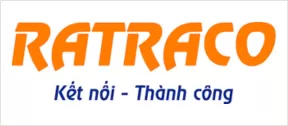









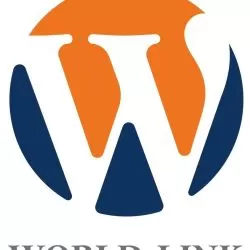


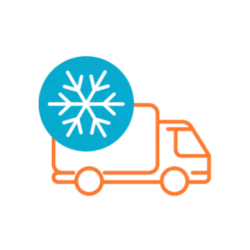
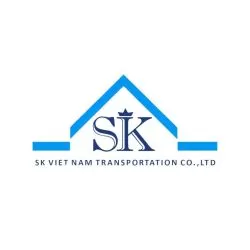


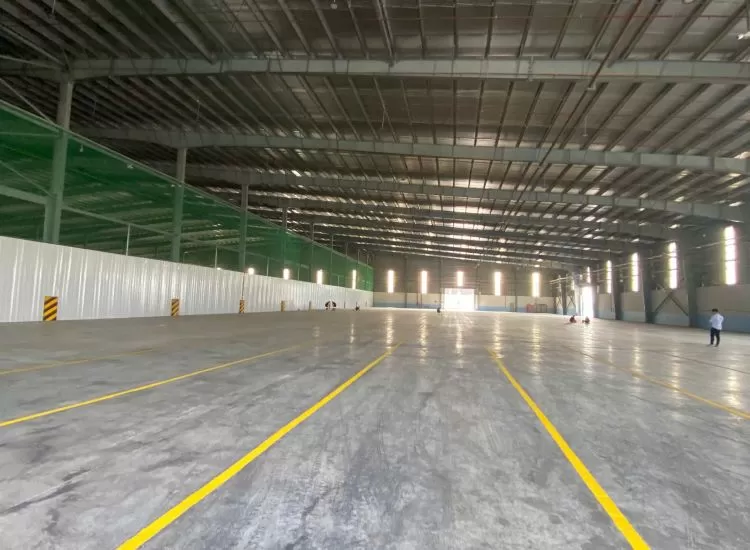
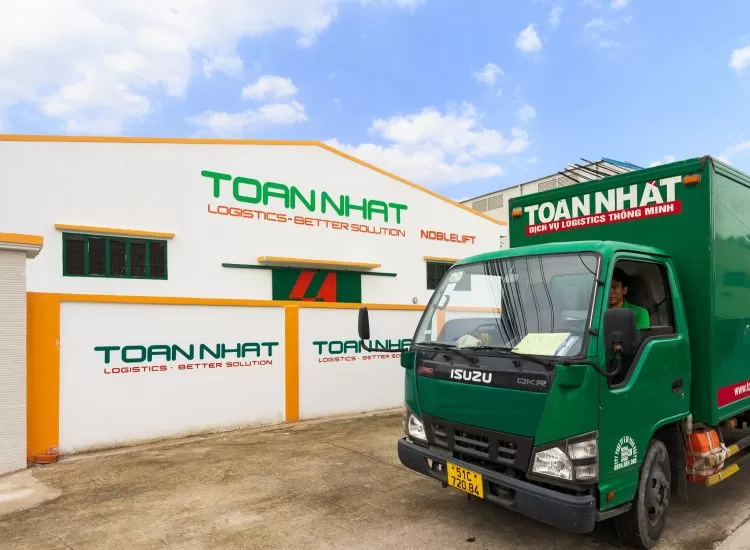
.webp)
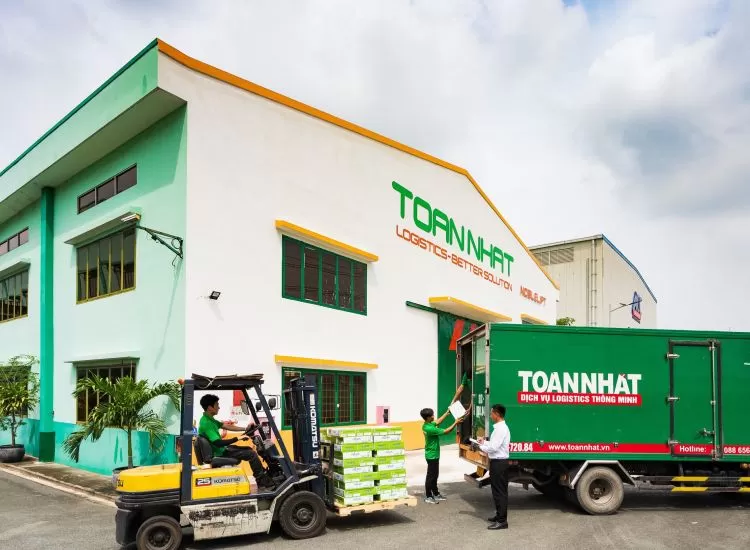
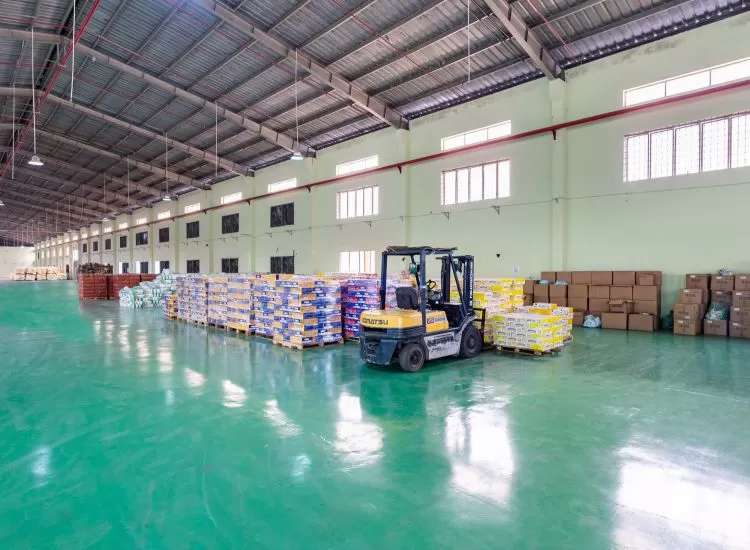


.webp)
.webp)
.webp)

